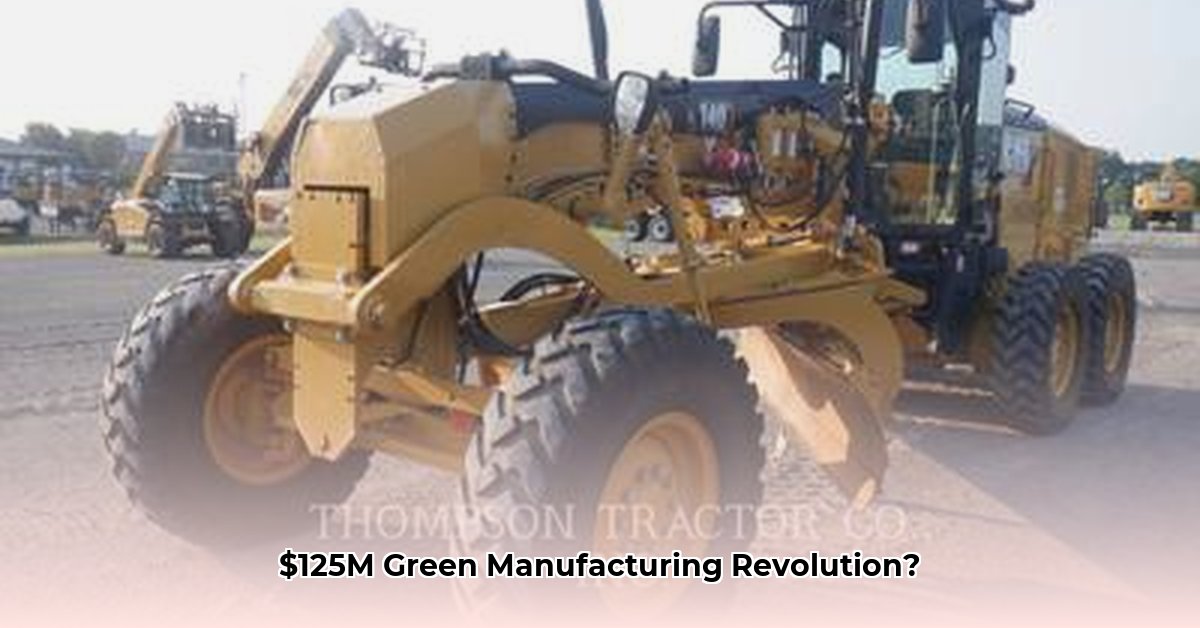
A Case Study in Sustainable Manufacturing Success
YKK AP's recent $125 million investment in a new manufacturing facility in Macon, Georgia, represents a significant leap forward in sustainable manufacturing practices. This expansion isn't just about increased production; it's a compelling case study demonstrating the synergy between economic growth and environmental responsibility. The project created 100 new jobs, boosting the local economy while simultaneously showcasing innovative approaches to minimizing environmental impact. This article examines YKK AP's strategies, highlighting key successes and areas for future development.
Smart Technology: Optimizing Efficiency and Reducing Waste
A cornerstone of YKK AP's sustainable approach is the implementation and expansion of their TREND system. This sophisticated system acts as a real-time monitor for energy, water, and gas consumption across the entire plant. By identifying and addressing inefficiencies, TREND allows for significant reductions in waste and operational costs. The system proactively detects leaks, optimizes air compressor performance, and generally streamlines energy usage. This data-driven approach not only benefits YKK AP's bottom line but also significantly reduces the facility's environmental footprint. Is this a model other manufacturers should emulate? The data strongly suggests a resounding "Yes."
Recycling and Resource Management: Closing the Loop
YKK AP's commitment to sustainability extends beyond energy efficiency. The Macon facility features a comprehensive recycling program encompassing plastics, metals, paper, and cardboard. This proactive approach minimizes waste sent to landfills and actively contributes to a more circular economy. Furthermore, YKK AP participates in community cleanups, demonstrating a broader commitment to environmental stewardship within the Macon community. How can other companies replicate this holistic approach to waste management? By integrating recycling programs and partnering with local communities, the potential for broader environmental benefits is considerable.
The New Facility: A Commitment to Transparency and Future Improvements
While the existing Macon facility boasts impressive green credentials powered by the TREND system, comprehensive environmental data for the newly constructed plant is still being compiled. While YKK AP's commitment to transparency is commendable, the lack of fully quantified data for the new facility represents an area needing improvement. The release of comprehensive data on the new building's carbon footprint and energy efficiency will be crucial for a complete assessment of the expansion's long-term environmental impact.
Actionable Insights for Sustainable Manufacturing
YKK AP's Macon expansion provides valuable lessons for other companies seeking to enhance their sustainability efforts. The following steps, derived from YKK AP's success, offer a roadmap for achieving similar results:
- Invest in smart technology: Implement real-time monitoring systems (like the TREND system) to identify and address inefficiencies. (Efficacy: Significant cost and emissions reductions)
- Develop a robust recycling program: Minimize waste by implementing comprehensive recycling and resource management programs. (Efficacy: Minimizes landfill contributions and fosters circular economy principles)
- Collaborate with suppliers: Integrate sustainability into sourcing decisions, encouraging and supporting environmentally friendly practices throughout the supply chain. (Efficacy: Promotes industry-wide change and improves supply chain transparency)
- Prioritize full data transparency: Publicly release comprehensive data on environmental impact, including carbon footprint and resource usage. This builds trust and encourages accountability. (Efficacy: Fosters trust and facilitates objective evaluation)
A Blueprint for the Future of Manufacturing
YKK AP's $125 million investment in Macon is a testament to the growing recognition that sustainable practices are not just environmentally responsible but also economically advantageous. The company's success in Macon serves as a powerful example, showcasing how economic growth and environmental stewardship can be mutually reinforcing. The future of manufacturing may very well follow this model, integrating innovative technologies, responsible resource management, and a clear commitment to transparency. This case study provides valuable insights and potential best practices, serving as a compelling model for the future of responsible manufacturing.